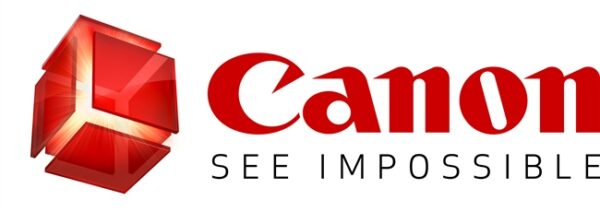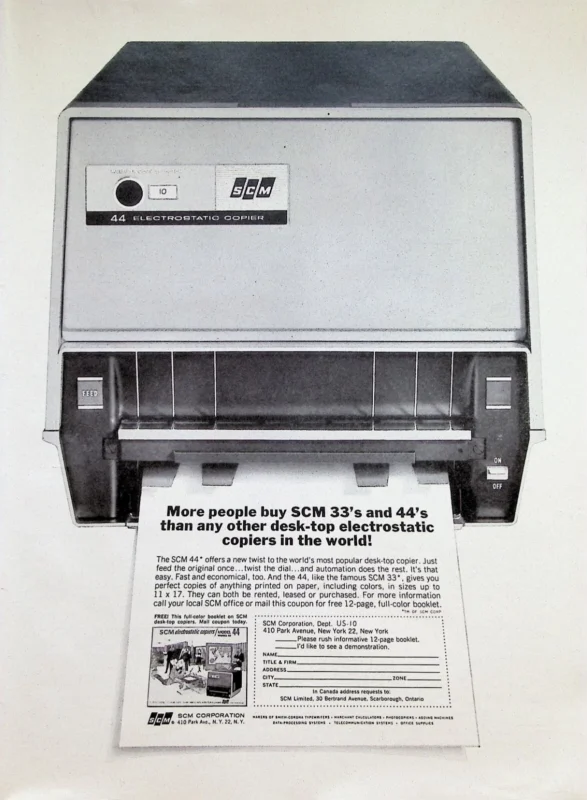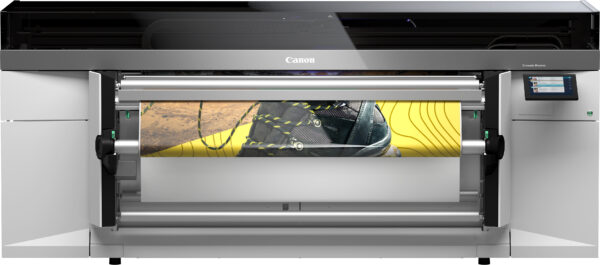The top office technology OEMs are setting a sustainability example with their environmental initiatives.
From newspapers to websites, to podcasts to the nightly news to the latest technologies, we are bombarded by buzzwords related to cars, phones, TVs, copiers, printers, and more. One of them is sustainability. But what does it mean?
Pundits say the “three pillars” of sustainability are economic development, social development, and environmental protection, with the latter commonly thought to be the most important (see sidebar, “Three Things”). When you dig into it though, you find sustainability means different things to different people, at least at the macro or big-picture level, which is home to much of the economic and social development aspects of the topic. It’s another story at the micro (or product) level, where smoke blooms and mirrors appear, the better to confuse anyone attempting to base purchase decisions on claims of sustainability. For our purposes, we’ll look at sustainability through the eyes of the major product vendors. The details of the major players’ programs can be found on their websites, usually by plugging “sustainability ” into your favorite search engine.
From a vendor’s perspective, sustainability for copiers and printers primarily orbits around toner and inkjet cartridges. Entire machines are in the mix too, having long been refurbished and resold to customers directly and through various channels. But whatever web pages you visit, the amount of information about these company’s sustainability efforts can be overwhelming. A quick summary follows.
Yet, before we get there, it’s useful to remember: Local actions done by many can have a trickle-down global impact. Equipment vendors know not all customers care about environmental issues and most OEMs will grudgingly admit that some aspects of sustainability are political or tied to marketing and corporate image. Still, what you do and what you tell your customers matters because they look to you as an expert.
Canon Inc.
Canon’s website offers a comprehensive overview of the company’s philosophy and details the processes of toner cartridge recycling. The site explains that inkjet cartridges are much more difficult to reuse, but here in the U.S., for example, Canon U.S.A. offers a no-cost process for returning used-up inkjet cartridges via drop-off at participating local FedEx Office locations; just be sure to call your local FedEx Office to confirm its participation.
The Business Copier Remanufacturing Program is helping Canon reach its goal to achieve zero-landfill waste by reusing parts, recycling materials, and employing energy recovery. According to Canon, the program has extended the lives of thousands of copiers.
HP, Inc.
HP takes a different approach. HP stands out among OEMs by looking beyond the press to paper issue with a broader climate initiative in partnership with World Wildlife Fund (WWF) with $11 million on the table for WWF in a five-year plan to help restore part of Brazil’s threatened Atlantic Forest and increase sustainable management of state-owned farms and forest plantations in China. Together, these programs protect some 200,000 acres and mark the start of HP’s Sustainable Forests Cooperative.
The initiative’s goals include providing guidance on the quantity and quality of forests needed in key regions to restore and protect forest ecosystems, and supporting the development of external tools for estimating the climate, water, and biodiversity benefits associated with conservation efforts.
This is a big-picture program. Without a reliable paper supply, printing will eventually be in some very rough waters. Paper mills are already limiting the range of basis weights available, a situation that could well get worse as print volumes decline. The HP/WWF initiative may help sustain key forests and even paper supplies and is a bold move other firms may be able to replicate. HP says that by the end of 2020, all of its branded papers and paper-based product packaging will be derived from certified and recycled sources.
HP has also decreased the amount of plastics used in its printers by 6% since 2016 and used some 99,000 tons of recycled plastic in its inkjet and toner cartridges through 2017.
Konica Minolta Inc.
Konica Minolta brings the three pillars of sustainability into its environmental policies, stating in its annual report that it integrates economic, social, and environmental perspectives in its business strategies and activities. The report says the company strives to reduce greenhouse gases stemming from its business activities and the lifecycles of its products.
Konica Minolta is also working toward minimizing the consumption of natural resources and promoting zero-waste emission activities, while accelerating its initiatives for recovery and recycling of end-of-life products and packaging materials. This is part of a process Konica Minolta calls “Green Marketing,” in which it shares environmental expertise and knowledge in its role as a manufacturer. The program includes a mix of conferences, evaluative visits, and tools provided to help companies become more sustainable. The process recommends actions Konica Minolta’s suppliers could take for reducing environmental impact and encourages them with information that may motivate them to take bigger steps. The company is also involved with tree-planting in Ethiopia, supports the Takao Forest Society in Japan, and provides environmental education for children.
Kyocera Document Solutions
Kyocera’s stance on sustainability is reflected on its website with this key message: “Sustainability is more than a part-time or volunteer effort. It is not a fad, volunteer effort, or a regulation—it’s a part of how we think and work.”
Kyocera embraces the principle of “harmonious coexistence,” doing what’s right for the environment and the communities in which it operates. According to Kyocera, the company’s sustainability approach includes:
- 100% recyclable packaging and literature.
- Vegetable-based inks on all printed materials.
- Use of FSC Forest Stewardship Council sustainable paper, when possible.
- Manufacturing paperboard and corrugated boards from Post-Consumer Waste (PCW) and/or Post-Industrial Waste (PIW) recycled content, whenever possible.
The company notes that although there is always more that can be done, it always considers what it does, how it is done, and who is entrusted to do the work. Sustainability, says Kyocera, is an endless quest, and there is always more it can accomplish.
Ricoh Co. Ltd.
To Ricoh, responsibility and sustainability are part of success. The company has been an Energy Star partner since 1976, routinely promoting sustainability in its business practices. Its goals include reducing its environmental footprint through resource conservation, pollution prevention, and energy conservation, and the company is committed to making strides toward achieving zero greenhouse gas emissions by 2050.
Ricoh is a charter member of EPEAT (Electronic Product Environment Assessment Tool), a program designed to help identify green imaging equipment and electronic devices. The factors measured by EPEAT include energy efficiency, packaging, consumable take-back (recycling) programs, and reduction or elimination of environmentally sensitive substances.
All of Ricoh’s manufacturing facilities are ISO 14001-certified (an international standard for guiding the development of environmental management systems) and support sustainable environmental management. Ricoh also supports the United Nations SDGs (Sustainable Development Goals), a global partnership for addressing the environmental challenges facing our world. The SDGs are the blueprint for achieving a better and more sustainable future. Following the three pillars of sustainability, Ricoh’s building blocks include people (society), planet (environment), and prosperity (economic activities).
Sharp Corp.
Sharp’s environmental policy (Eco Vision 2050) reaches forward some 30 years and is spread across products from appliances to widescreen TVs, to copiers and printers. Under this vision, Sharp is taking on the challenge of realizing a sustainable global environment, while minimizing the environmental impact caused by greenhouse gases, waste, and other by-products of its businesses.
Sharp has worked to decrease its energy use and to make products that are increasingly more energy efficient. While this certainly can have customer appeal, Sharp goes further, turning to solar power to generate electricity for manufacturing. Sharp says the company seeks to create more clean energy than it consumes, moving the firm toward its goal of net-zero CO2 emissions.
On the recycling front, Sharp’s toner cartridges are designed for reuse and recycling, ensuring durability and reducing the time needed to reprocess used cartridges. Sharp’s recycling program for used ink and toner cartridges encourages bulk shipping of used cartridges because it requires less energy than shipping a few at a time. Sharp also refurbishes copiers, printers, and MFPs sold through dealers and other channels.
Toshiba
The Japanese electronics giant’s sustainability efforts are branded “Ecosmart” for its line of toner printers and copiers and its toner recycling program. Owners of Toshiba equipment need only place used toner cartridges in a Toshiba-supplied box and call for pick up when the box is full. It is exchanged for a new, empty box, ready for the next load. The program includes cartridges, toner bags, drum units, and more, all in the name of recycling and reducing the environmental footprint of Toshiba copiers and printers.
The company’s broader Ecosmart strategy extends to product design and waste-reducing software tools that customers can use to manage printing across multiple devices to reduce paper and energy consumption. Within this, Toshiba’s “Encompass Green Report,” individualized for each customer, estimates and states a customer’s annual environmental impact in terms of the number of trees consumed, wastewater produced, and paper and cartridge solid waste generated.
A headline on one of Toshiba’s environmental pages sums up the company’s efforts: “One of the easiest places to start reducing your eco-impact—while saving money—is with printing. Toshiba will collaborate with you to identify a solution that will best enable your business to print smarter, safer, leaner, and greener.”
The company has also developed the hybrid e-STUDIO series of monochrome MFPs with an erasable print function, enabling customers to use the same paper multiple times.
Xerox
Xerox has several print-related sustainability initiatives. These start with lowering the carbon footprint of its equipment, meeting Energy Star requirements, and reducing greenhouse gas emissions. It also has ongoing efforts in paper sourcing, paper recycling and efforts to preserve forests. Xerox has also engaged in efforts to remove toxic chemicals from its manufacturing processes and reduce waste in its products, both in-use and during manufacturing. Further initiatives are underway in chemical management, and health and safety.
The environmental and sustainability content on the Xerox website details what the company is doing but also suggests ways customers can make smarter and more sustainable decisions about the products they buy and how they use them. Such vendor-driven education can be especially useful for people concerned with sustainability or climate change because it is more proactive than merely listing ways in which companies are working to present a sustainable image to the world. The site makes for a lot of reading, but there are numerous good ideas and plenty of information available for those who take the time to peruse the pages.
Got Sustainability?
As noted earlier, it matters not whether you think climate change is a fabrication or an actual threat. Most of us probably like cleaner air and water that doesn’t need special treatment before we can use it to shower, brush our teeth, or make coffee. Broadly speaking, all dealers also certainly hope their businesses can move forward to greater success in the future.
As we enter the third decade of the 21st century, sustainability is part of that success. What happens in your office and those of your customers are parts of our collective environmental impact. We advise you to consider how sustainable practices can make sense for your business and look at what your OEMs and customers are doing.
Sidebar: Three Things
The amount of information vendors provide about their sustainability practices can be overwhelming, and depending on which of the many vendor pages you land on, it may span all three pillars of sustainability. But for the interest of copier/printer dealers, sustainability boils down to three things.
Thing 1: The economics of recycling some items—toner and inkjet cartridges for example—can make a lot of sense, but we must realize that most empty cartridges are not cleaned, refurbished, and returned to the market. Most vendors have recycling programs for such consumables, yet the extent to which these programs benefit customers is not always clear. While some components of toner cartridges can be reused or refurbished, many cannot. The plastic container itself is often recycled to have another life in an entirely different form. Some third-party companies buy used cartridges to refurbish, refill, and sell. Inkjet cartridges (much like rechargeable batteries) often contain toxins, heavy metals, and other dangerous chemicals known for causing soil contamination and water pollution. Recycling them is always better than having them degrade into water supplies.
Unfortunately, despite vendor-sponsored programs, many empty print cartridges are discarded rather than recycled. Preton, an enterprise print management company based in Tel Aviv, has found that some 350 million ink and toner cartridges wind up in landfills across the United States every year where they can leak into soil and waterways. A New York Times story on December 9, 2019, (“The Great Recycling Con” reports that many plastic items that are supposedly recycled—from cups and bottles to straws and packaging designed for re-use, including toner and inkjet cartridges—simply end up in landfills. This sobering realization raises an all-important question: Are there ways we can continue to print while limiting our impact on the environment?
Thing 2: Sustainability and climate change often seem joined at the hip. While this can be true, the two terms are not synonymous. Every equipment vendor has a story that touches on climate change—tales that are commonly linked to Thing 1. The problem is it can be difficult to ascertain how sustainability and climate change overlap in the world of office printing and copying. Sustainability is really about environmental protection, which is not necessarily related to climate change.
Thing 3: Finally, there is the issue of paper after it has been imprinted with toner and ink. This is more of an issue for your customers, but you still need to know about it. During de-inking, toner detaches from paper relatively easily, making recycling fairly straightforward. Inkjet ink, which attaches itself to paper fibers, is much more difficult to remove, so the paper can be harder, if not impossible, to recycle. Ironically, as inkjet rises in prominence, many toners can be a more sustainable alternative, assuming the paper recycling process is done properly. This is important to understand because it encompasses the document lifecycle.
Access Related Content
Visit the www.thecannatareport.com. To become a subscriber, visit www.thecannatareport.com/register or contact cjcannata@cannatareport.com directly. Bulk subscription rates are also available.



